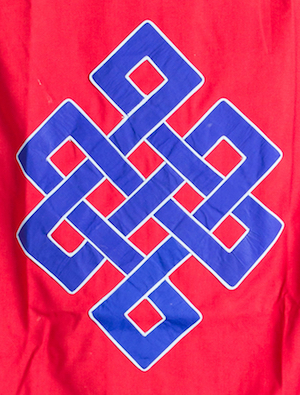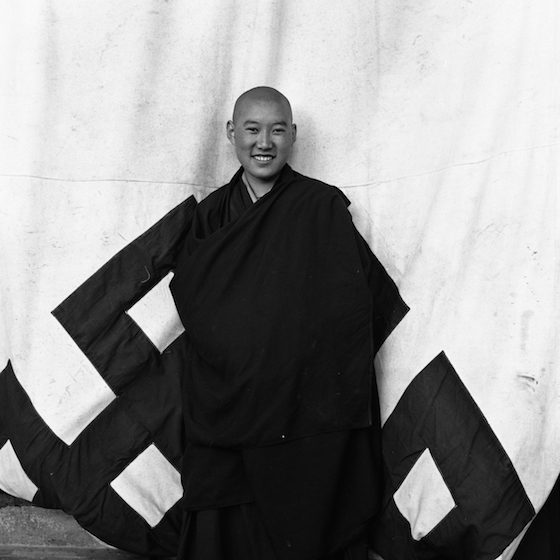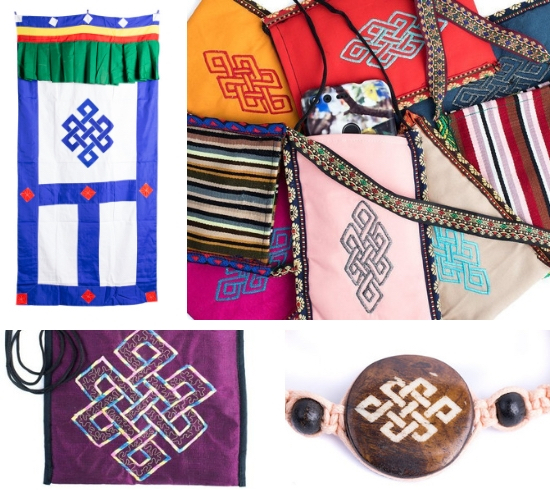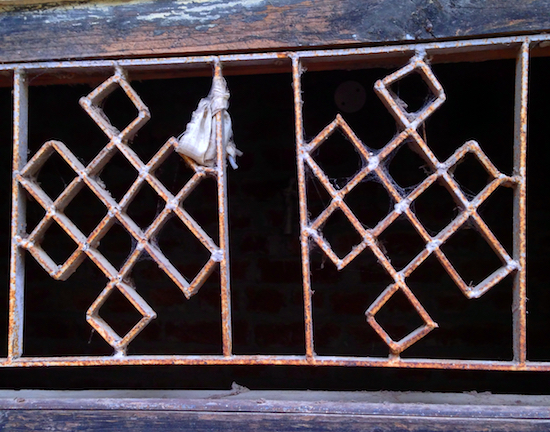The eternal knot is one of the eight auspicious symbols in Tibetan Buddhism.
The eternal knot, sometimes called the “endless knot” or “the glorious knot” is called དཔལ་བེའུ། or palbeu in Tibetan. In Sanskrit, it is called shrivasta.

Tibetan Eternal Knot
Because the knot has no beginning and no end, the eternal knot symbolizes the endless wisdom and compassion of the Buddha.
The eternal knot symbol has many other meanings.
It may symbolize the interconnectedness of wisdom and compassion; the eternal continuum of mind; samsara, the Buddhist concept of the endless cycle of suffering or birth, death, and rebirth; the union of wisdom and method; and the interdependence and interconnectedness of everything in the universe.
The remaining seven auspicious symbols in Buddhism are a white parasol, two golden fishes, a wish-fulfilling treasure vase, a lotus flower, a conch shell, a victorious banner, and a golden wheel.
In Buddhism, the eight auspicious symbols represent the offerings made to the Shakyamuni Buddha when he attained enlightenment.

This lovely B&W portrait of a Tibetan refugee nun was taken in the 1990s by Susan Lirakis. Behind the nuns is part of a large eternal knot.
The eternal knot and the other symbols of good fortune are used in many ways, such as on khatas or kataks (ceremonial scarves), for door hangings, in greeting cards, in Tibetan handicrafts such as Tibetan carpets or seat mats, on prayer flags, as jewelry, and in art and printed books. Visit our online store to see many products that feature the Tibetan eternal knot design and which are sold to support the nunneries.

A selection of Tibetan handicrafts with the eternal knot symbol made by the nuns at Dolma Ling Nunnery and available through our online store.
The endless knot is often used as a design on Tibetan buildings and tents.

Eternal knots as balcony designs at Geden Choeling Nunnery in Dharamsala. Photo courtesy of Hillary Levin
